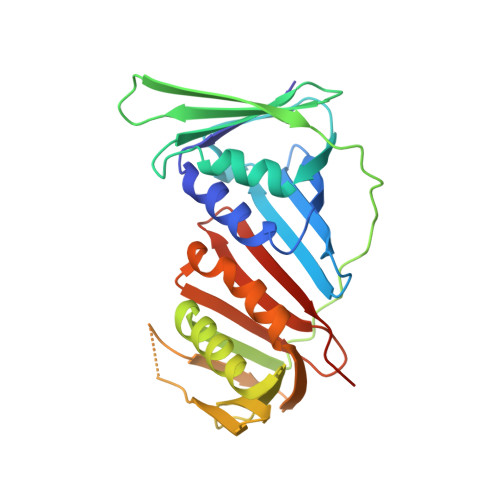A Disease-Causing Variant in PCNA Disrupts a Promiscuous Protein Binding Site.
Duffy, C.M., Hilbert, B.J., Kelch, B.A.(2016) J Mol Biology 428: 1023-1040
- PubMed: 26688547
- DOI: https://doi.org/10.1016/j.jmb.2015.11.029
- Primary Citation of Related Structures:
5E0T, 5E0U, 5E0V - PubMed Abstract:
The eukaryotic DNA polymerase sliding clamp, proliferating cell nuclear antigen or PCNA, is a ring-shaped protein complex that surrounds DNA to act as a sliding platform for increasing processivity of cellular replicases and for coordinating various cellular pathways with DNA replication. A single point mutation, Ser228Ile, in the human PCNA gene was recently identified to cause a disease whose symptoms resemble those of DNA damage and repair disorders. The mutation lies near the binding site for most PCNA-interacting proteins. However, the structural consequences of the S228I mutation are unknown. Here, we describe the structure of the disease-causing variant, which reveals a large conformational change that dramatically transforms the binding pocket for PCNA client proteins. We show that the mutation markedly alters the binding energetics for some client proteins, while another, p21(CIP1), is only mildly affected. Structures of the disease variant bound to peptides derived from two PCNA partner proteins reveal that the binding pocket can adjust conformation to accommodate some ligands, indicating that the binding site is dynamic and pliable. Our work has implications for the plasticity of the binding site in PCNA and reveals how a disease mutation selectively alters interactions to a promiscuous binding site that is critical for DNA metabolism.
- Department of Biochemistry and Molecular Pharmacology, University of Massachusetts Medical School, Worcester, MA 01605, USA.
Organizational Affiliation:
















